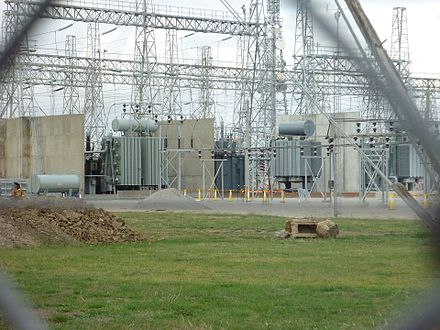Transformer is a static device which works on principle of electromagnetic induction. Transformer faults can be broadly classified as external and internal faults.

External transformer faults
External transformer faults in the transformer are usually transient (not occurring for long time) in nature and they are easily detected and rectified accordingly. Faults occurring outside the transformer, that means when the fault occurs in the switchyard equipment or bus or some feeder fault is detected by relays installed in the transformer.
For external faults ,over current earth fault relay which is also called back-up relay is used.External faults are not very much a matter of concern. As soon as the fault clears ,the transformer can be safely charged again.
Internal transformer faults
When an internal transformer faults occur in a transformer, it becomes a matter of concern. For detection of Internal faults in a transformer ,differential relay is used. Internal faults can be due to following reasons :
i) Restricted earth fault : REF protection covers the internal ground faults (not external) occurring in windings of transformer. Windings are covered with paper insulation , but if due to some reason or some fault the paper insulation breaks or there is insulation failure and the winding touches the transformer’s main body which is always grounded, then it will cause an internal ground fault.
Bushing current transformer or turret C.Ts are used for detection of REF .It is called Restricted Earth fault because the differential protection only detects the fault within the Transformer, and it is within a restricted area
ii) OTI/WTI Protection: Fault due to excessive temperature of oil and excessive winding temperature of the transformer is detected by oil temperature indicator(OTI) and winding temperature indicator (WTI), probes attached to OTI and WTI are connected with the Transformer which continuously indicates the oil temperature and the winding temperature .OTI and WTI have mercury switches which make/break contacts to give alarm and tripping command when temperature goes higher. Alarm and trip temperatures are manually set in these indicators.
Temperature can get higher due to many reasons like oil being impure and moisture content inside it. Also , if the radiator valves are not open and the oil is unable to circulate or the cooling fans/pumps are not operating properly then also the temperature can rise inside the transformer.
iii) Pressure relief valve protection: When there is some internal fault in the transformer it raises the oil temperature and results in formation of gases, this abnormal pressure is released by pressure relief device, this device is also connected with auxiliary relay and its alarm and trip indication is given in differential protection.
iv) Buchholz relay protection: Oil surge relay or Buchholz relay work on same principle which is to detect the accumulation of gas within the transformer’s oil. As gas is generated within the oil due to a fault, it rises to the top of the transformer tank, displacing oil. When a small amount of gas is generated, the float switch in the relay rises slightly due to the displacement of oil.
This triggers the Buchholz relay to initiate an alarm signal. If the gas generation rate increases significantly, the float rises further, reaching a critical point. At this stage, the Buchholz relay initiates a trip signal, which can be used to disconnect the transformer from the power system by tripping the circuit breaker.
Gas can form inside a transformer due to internal faults and poor insulation.
v) Magnetic Oil Level gauge : Magnetic Oil Level gauge(MOG) is round dial shaped oil level indicator which indicates level of oil in main conservator tank ,when oil leakage occurs in the transformer due to some fault or any other reason ,the oil flows from main conservator tank to transformer’s main body and due to this the mercury switch in MOG operates which gives command to alarm bell . MOG gives indication to differential relay which actuates auxiliary relay and alarm blows in the panel of the control room.